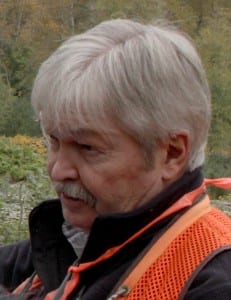 City Light got to share its expertise in managing natural resources across two nations with a group of international visitors in April.
City Light got to share its expertise in managing natural resources across two nations with a group of international visitors in April.
City Light got to share its expertise in managing natural resources across two nations with a group of international visitors in April.
Scott Powell, a Seattle City Light environmental affairs staff member, spoke April 25 to a visiting group from India and Bangladesh about the Skagit Environmental Endowment Commission (SEEC). The group included government officials and non-governmental organization representatives who are working to preserve the Sundarbans mangrove forest along the border of those two countries.
During a presentation at the North Cascades Environmental Learning Center, Powell explained the history and development of the Skagit River watershed north of Ross Dam, an environmentally sensitive area shared by the United States and Canada.
He explained how the planned raising of Ross dam – and the flooding of the river and forest to the north – ran into opposition from British Columbiain 1952. Years of negotiation involving government and environmental interests in Canada and the United States resulted in a 1984 treaty that kept Ross Dam at its current height, provided City Light with electricity purchased from British Columbia, and set up an endowment fund and the SEEC to administer it.
Since then, the Skagit Environmental Endowment Commission has worked with partner organizations to promote education, enhance recreation, and participate in land and ecosystem management of the Skagit watershed. The commission’s website is at http://skagiteec.org/
Powell said the presentation was directly relevant to the visitors from India and Bangladesh.
“We have a similar area of forest to care about as they do,” he said. “We have many things in common, and they were impressed with our capacity to protect these natural resources.”
The Sundarbans mangrove forest covers about 4,000 square miles of the delta of the Ganges, Brahmaputra and Meghna rivers. It is an ecologically rich area, noted for its population of endangered Bengal tigers.
